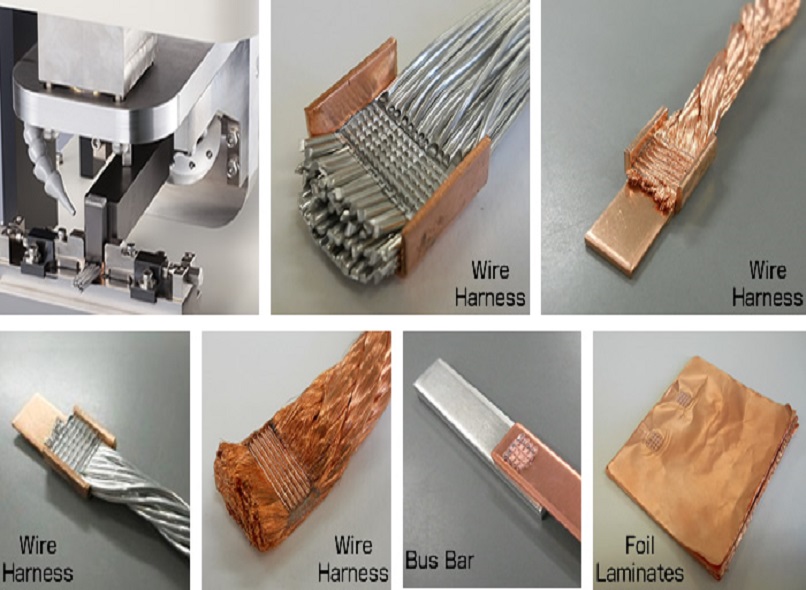Is it possible to ultrasonically weld metal?

Yes, it is possible to ultrasonically weld metal. Ultrasonic welding is a widely used technique in various industries for joining metal parts together. It involves the application of high-frequency vibrations to create friction and heat between two metal surfaces. This heat causes the metal to soften and fuse together, resulting in a strong and reliable bond.
Ultrasonic welding offers several advantages over traditional welding methods. Firstly, it does not require the use of additional materials such as adhesives or solder, making it a cost-effective option. Additionally, ultrasonic welding is a non-destructive process that does not compromise the structural integrity of the metal. This makes it particularly useful for joining delicate or heat-sensitive metals, as it minimizes the risk of distortion or damage.
The automotive industry extensively utilizes ultrasonic welding for various applications, including joining metal components in car bodies, electrical connections, and fuel systems. This technique ensures the structural integrity and longevity of the assembled parts, contributing to the overall safety and performance of vehicles. Similarly, in the aerospace industry, ultrasonic welding is commonly used for joining metal parts in aircraft structures, ensuring the integrity and safety of the aircraft. Ultrasonic welding provides a reliable bonding solution for critical components in aerospace applications, where strength, durability, and weight reduction are essential.
In the electronics industry, ultrasonic welding is employed for bonding metal wires and components in electronic devices, ensuring reliable electrical connections. This technique enables the production of high-quality and durable electronic products, as it creates strong and consistent bonds between metal elements. Ultrasonic welding is particularly advantageous in electronic manufacturing processes where heat-sensitive components are involved, as it does not generate excessive heat that could damage the delicate electronic parts.
Apart from its application in these industries, ultrasonic welding is also utilized in the medical field. It is commonly used for joining metal parts in medical devices and equipment. Ultrasonic welding ensures the integrity and biocompatibility of medical devices, meeting the stringent requirements for safety and reliability in healthcare settings.
The feasibility of ultrasonic welding metal depends on several factors, such as the type of metal being welded and its thickness. Certain metals, such as aluminum, copper, and titanium, are more suitable for ultrasonic welding due to their excellent heat conductivity and weldability. Thicker metals may require higher power levels to generate sufficient heat for welding, while thinner metals may require lower energy levels to avoid excessive melting or deformation.
In terms of the ultrasonic welding process, ultrasonic welding typically involves the use of a specialized ultrasonic welding machine. This machine consists of a transducer, a converter, and a horn. The transducer converts electrical energy into high-frequency mechanical vibrations, which are then amplified by the converter. The horn focuses and transfers these vibrations to the metal surfaces to be welded, creating the necessary friction and heat.
During the ultrasonic welding process, the metal surfaces are held together under pressure, ensuring intimate contact and allowing for the transmission of vibrations. The high-frequency vibrations cause the metal to vibrate at a microscopic level, breaking down surface oxides and contaminants and promoting molecular diffusion between the metal atoms. This leads to the formation of a metallurgical bond between the metal surfaces, resulting in a strong and durable weld.
It is important to note that proper preparation of the metal surfaces is crucial for successful ultrasonic welding. The surfaces must be clean and free from any dirt, oil, or oxide layers that could hinder the ultrasonic welding process. Additionally, the precise control of welding parameters such as frequency, amplitude, and welding time is essential to achieve optimal weld quality.
In conclusion, ultrasonic welding is indeed a viable option for joining metal parts together. Its ability to create strong and reliable bonds, cost-effectiveness, non-destructive nature, and its applications across various industries make it a preferred choice where precision, efficiency, and quality are paramount. With its wide range of benefits and continuous advancements in technology, ultrasonic welding continues to play a significant role in modern manufacturing and engineering processes.





